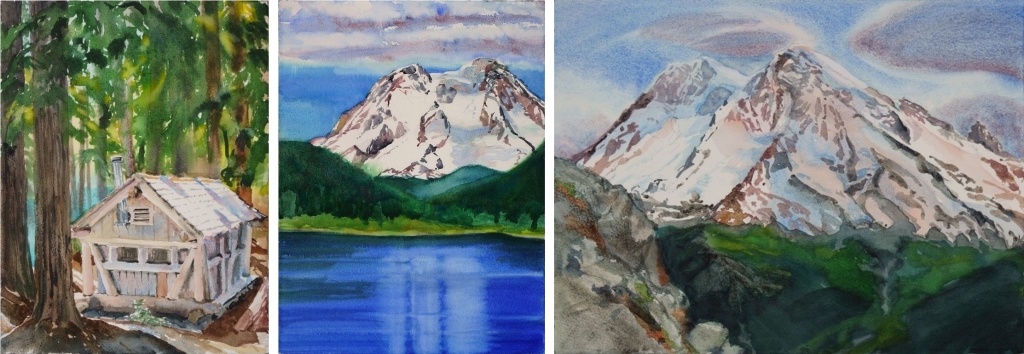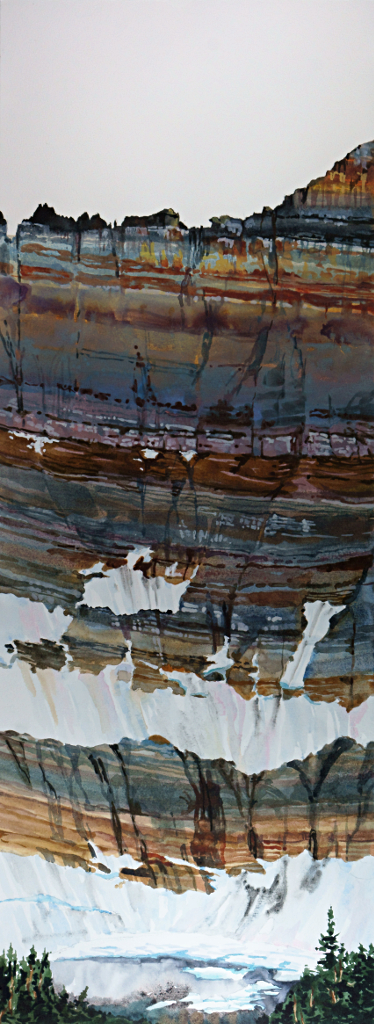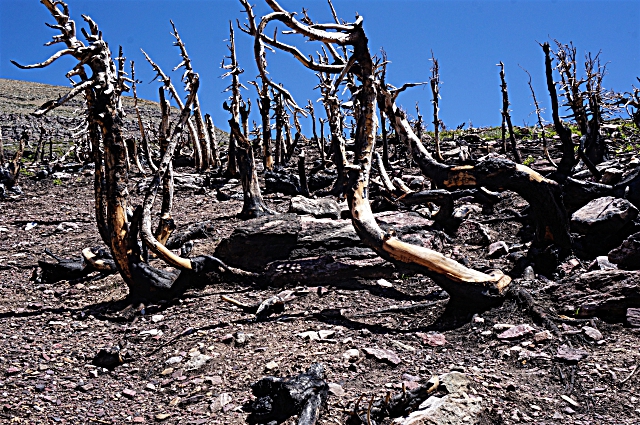Suze’s Art News September 2022
“Art ought to be a troublesome thing, and one of my reasons for painting representationally is that this makes for much more troublesome pictures.” David Park (posted on the wall above his paintings in the Oakland Museum of California.)
Carbon is a show at The Vestibule gallery in Seattle. I hung one of my burned tree paintings on the wall and installed a “fire pit” on the floor below it. The stone circle contains objects evoking the top carbon-emitting sectors: energy production, transportation, and agriculture, with a chunk of concrete for the built environment as one member of the ring of stones. There is an opening/performance 9/10 starting at 6 pm that I will attend.


I’m happy to be in Lynn Hanson Gallery’s annual ICON show again with both a burned tree painting and a bark beetle book. There is a Seattle reception there 2-4 pm, also on 9/10, that I plan to attend.

Right: Twisted, Varnished watercolor on torn paper, 52H x 21”W
I gave a virtual talk for The Bug Society (aka “Scarabs”) in July and have several coming up: Seattle’s Book Arts Guild at 7pm on 9/8, and, together with Lorena Williams, “Wildfire in Beloved Places” on 9/15 for the Wildling Museum’s Fire & Ice exhibit.

(In the background is one of Amiko Matsuo’s innovative Phos-Chek paintings.)
I had the pleasure of being a resident at the Mineral School in early August. I finished two new burned tree paintings and still managed to get out to nearby Mount Rainier for hikes and seven small landscape paintings.

In June I gave an in-person talk in Twisp, WA, as a 2022 Mary Kiesau Community Fellowship recipient. In September-October I will be heading back to the Methow Valley to begin my listening project: to community members, naturalists, and activists about the 2021 fires. I will also explore the burns themselves. I expect hearing from the people most involved and affected to influence my future artwork.
“Art that Matters to the Planet” continues at the Roger Tory Peterson Institute in upstate New York, and “Environmental Impact II” will move from Michigan to Southeast Missouri State University.
At the end of October, I’ll be installing the Magnitude of the Problem painting in the Shunpike Storefront window at Mercer and Terry Streets in South Lake Union, Seattle, where it will be until the end of January 2023.

After that I’m looking forward to a quiet spell into early 2023 where I can focus creating on new work!











 It will not surprise you to hear I made myself a massive, hunker-down, shelter-in-place project, now nearly three-quarters completed.
It will not surprise you to hear I made myself a massive, hunker-down, shelter-in-place project, now nearly three-quarters completed.




























